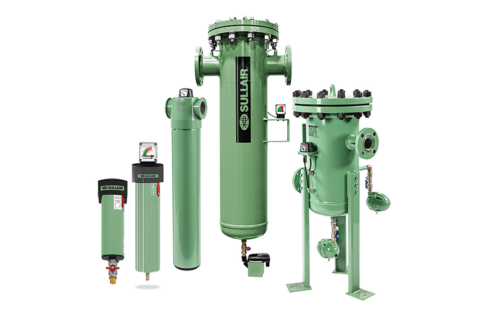
New Year’s Resolution #73 – Stop Worrying About Compressed Air
Lots of people make New Year’s resolutions. Many resolutions are very noble, and sound good during the reverie of a New Year’s Eve celebration but are soon abandoned in despair because the resolution seems unachievable. Alas, another broken resolution.
In the business world, New Year’s resolutions are defined as “Annual Objectives.” As it turns out, abandoning annual objective is not usually permitted. We should choose our Annual Objectives wisely.
What if there was an option available to you that allows you to keep a personal resolution and establish an easily accomplished annual objective? There is an option that helps reduce your worries while at the same time improving your plant’s operation.
Make 2021 the year that you outsource your compressed air.
Do you worry about your electricity provider? Your natural gas or water provider? Probably not. Your only encounter with them is when the monthly invoice, which varies widely, arrives. Outages are rare, and when they occur, service is quickly restored with no intervention from you.
Yet, when there is an issue with your compressed air system, you most likely handle it internally. Operations notices a problem and calls maintenance. The maintenance coordinator tasks a mechanic with going to the compressor room to see what’s going on.
After a quick look the mechanic decides to manually start the back-up equipment and advises that someone needs to call the distributor to send someone out.
Why do we treat compressed air differently than other utilities? Few manufacturers generate their own power, pump water from their own well or provide their own natural gas. Yet, most manufacturers generate their own compressed air. Why?
In truth, there are a lot of good reasons to reconsider the traditional arrangement of owning and maintaining your compressed air system.
Let’s start with the ownership part. If you own the equipment, your capital dollars are tied up in air compressors, dryers, filters, and receivers rather than the process equipment that produces finished goods and revenues that support the organization.
If you own the equipment, then you are responsible to maintain it. Someone in the organization is coordinating the service calls, generating the purchase orders and receiving invoices. Those tasks are needed for even the routine maintenance. What about the run-of-the-mill parts that “better be fixed now before it breaks and causes the compressor to fail?” Uh-oh. That repair wasn’t in this quarter’s maintenance budget.
Who in your organization lives this dream? It’s 3:00 a.m. on Sunday morning. Everyone is enjoying a relaxing weekend. The cell phone pings; it’s the plant. Compressor number two won’t start; there’s a fault on the display. Someone’s weekend just got cut short. Hopefully, it’s not your weekend. But someone on the maintenance team is starting the week off in a bad way.
Maybe a key metric for measuring performance is Return on Assets (ROA). If you own the compressors, they are a significant capital asset. What kind of return are they providing you?
Is it time for the annual visit from your metropolitan sewage department? They are going to grab samples of your wastewater for testing. Hmmm, what’s that oily contaminant? When was the last time someone looked at the condensate management system in the compressor room? Not high on the priority list, but a situation is looming. The call with EH&S over this one is not going to be fun.
Perhaps you are in the midst of a large expansion and the budget is tight. What if someone could reduce the capital budget by a few hundred thousand dollars without impacting your production capacity?
Possibly your compressed air system is held together with bailing wire and bubble gum, is ill-fitted to the process demands and is at the end of its useful life, but the CAPEX budget is already depleted. What now?
The answer to these questions and many more, when it comes to owning compressed air equipment, is simple. There is another way, and for most users, a better way.
Outsourcing your compressed air solves all these problems. Imagine a scenario where there is a custom-designed compressed air system in your facility, efficiently meeting your demand for compressed air. The compressed air is clean and dry, and delivered at the right pressure. There are back-up components, so no more downtime due to compressor issues.
Your capital budget is in great shape because no capital was spent to obtain the equipment. The accounting department is thrilled; they get one monthly invoice for the compressed air system. Your plant maintenance scheduler is relieved. Someone just comes to the plant and takes care of the compressed air system. No last-minute purchase orders and invoices. No frantic phone calls in desperate search of rental equipment. The ROA looks better than ever, because the compressors are no longer a capital asset.
Clean dry air just keeps on flowing through the header. Soon, you forget about the compressors and think about compressed air like you do electricity. It’s always there, as much as I need, without a second thought. You know, like any other utility. Electricity, water, natural gas and now compressed air.
That sounds like a dream, right? It is reality for users who choose to outsource their compressed air. There are a lot of advantages to treating compressed air like a utility.
So, keep your New Year’s resolution to worry less and at the same time meet an annual objective. Make compressed air the fourth utility in your plant. The first step is to contact Sullair today and learn more about Sullair Managed Air Power; the best way to make compressed air the fourth utility in your plant.

